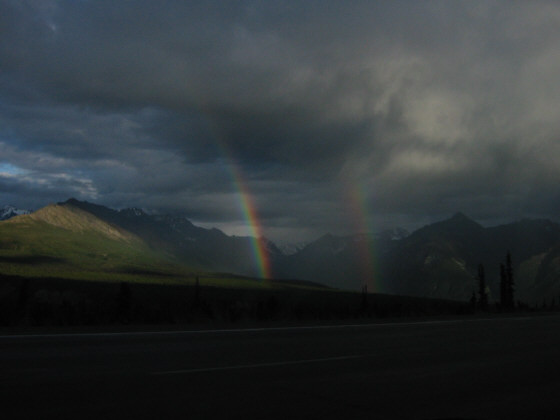
By Karla Fetrow
Finding Never Land
You wouldn’t really know about Chugiak unless you lived there. That is to say, the name would be lost as just another brief suburb along the highway between Anchorage and Wasilla, and if you found yourself surprisingly in the town because you failed to take the Eagle River exit onto the New Glenn Highway, your only stop would be to ask for directions to somewhere else.
It doesn’t even own a newspaper, although its history is nearly as old as the founding of Anchorage and it did begin with its own courier. In its sparkling youth, when it chose to incorporate as a community, it retained the option of annexing with Anchorage or the Matanuska Borough. Its initial growth was rapid and it became the hub between industrious Anchorage and the farming town of Palmer. Beginning with five families, a post office that also served as a small general store, a wash room and cabin rental in a place called Moose Horn, it boomed to several hundred people within a few years.
People found the little community, sheltered from the Cook Inlet winds by a natural cove, a more temperate place to live than the city of Anchorage, which faces open coastal waters. They didn’t mind communing the twenty miles to work for a home where the temperatures were a little milder and the land more undisturbed by busy development. The first school classes were held in the home of one of the first five families. By the time a new school had been built, so had a new post office and several homes for housing the freshly hired teachers.
These freshly hired teachers also wanted a library, and it wasn’t long before one of the two room apartments was turned into one, receiving books and a librarian purely on a voluntary basis. It was around this time, while Chugiak was cultivating its educational opportunities, that Maxine Bellringer began writing a weekly paper called “The Knik Arm Courier” that covered the news of the Chugiak boundaries from Eklutna Village to Eagle River.
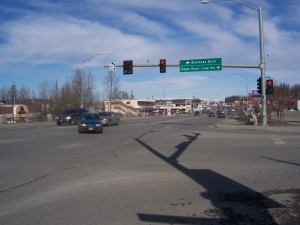
Although Chugiak enjoyed the first boom, it was ultimately Eagle River that began to grow. Just ten miles from two major military bases, it was the ideal location for civil service employees and stationed military families. The early pioneers; the pig farmers and potato growers began selling off their homesteads in half acre and acre lots for housing developments. They obtained a grocery store and gas stations. A rift began to grow between the two areas that had once been united under the name Chugiak. Eagle River wanted a township. Chugiak wished to remain a community. The rift grew a little wider when the existing school could no longer house all the new students and a new one was built in the now more populated area of Eagle River.
For a short while, the two communities were isolated from each other. Eagle River had its own center, with its own post office, a tool rental shop, several small stores and gas stations, a laundry mat and the largest grocery store between Palmer and Anchorage. The Knik Arm Courier was bought out by Lee Jordan, who published the “Eagle River Star”, a newspaper that still exists although Jordan has retired. Chugiak grumbled that Eagle River was getting uppity, forgetting its humble ties to the home base, but quickly made use of any conveniences that meant they didn’t have to travel far from home.
Birth of the Rabble Rousers
The two communities quickly put aside their disagreements in 1972. The pipeline was underway and every available housing unit was snapped up for rent. While more units were slammed together and trailers arrived on building lots like popcorn, the campgrounds overfilled with pipeline worker hopefuls living in tents or campers. Anchorage was burgeoning and so was the amount of green backs the city was seeing going into its coffers.
There was a lot of talk back then on moving the capital from Juneau, reached only by flight or ferry, to a more accessible location. All eyes turned to the wide, fragrant Matanuska Valley. A new highway was built from Anchorage to Fairbanks. Although the more direct route saved over a hundred miles of road travel, it cut a wide girth around Chugiak, veered sharply away from Palmer, running through the middle of the small farming towns, Wasilla and Willow, throttling the trade routes along the Richardson, which, until then, had been the only Anchorage connection. Speculators began buying up homesteads in Wasilla and Willow, gambling that one of these towns would be the location for the new Capital.
The capital never moved, Willow continued to be just Willow, but Wasilla remained undisturbed by rumors it would never become a center of industry. With Eagle River and Chugiak residents stubbornly holding on to their land titles, Palmer snubbing anyone who couldn’t stand behind a plow, Wasilla threw together a hodge podge of housing developments, renting them out to oil workers.
Seeing the wealth spilling out of its city center, Anchorage declared the entire borough would become the City of Anchorage. With that one decision, Anchorage, with a population of no more than a quarter million people, became the largest small city in the world, covering a mass of over one hundred square miles.
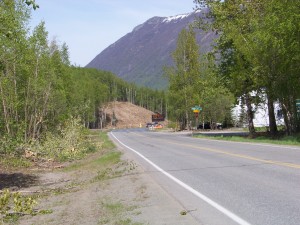
Eagle River and Chugiak were outraged. The little community that had wanted a township suddenly declared it was a part of Chugiak and the little community that had been unable to decide whether to affiliate with the Matanuska Valley or Anchorage, had its choice made for it. Chugiak, Eagle River and the Village of Eklutna were incorporated into the City of Anchorage.
A battle ensued. The people of the Chugiak district decided to form their own borough. They elected the newspaper editor, Lee Jordan, as mayor and put together an assembly. Within days after they had been sworn into office, Anchorage filed a suit within the Anchorage courts for illegal elections. Anchorage decided it had a perfect right to annex the communities of Chugiak and Eagle River into their long distance plans, primarily because it had a strong appetite for Eagle River’s vast water stores. The case was moved painstakingly into the State Courts, but it didn’t get much beyond the first hearings when the modest coffers of Chugiak crumbled beneath the high powered and well-padded pockets of Anchorage attorneys.
To make sure Chugiak understood its place, the Anchorage press covered the ill-fated progress of the attempted divorce, explaining to the dear readers that the Appalachian styled community was filled with a lot of rabble rousers. The Anchorage population was deeply understanding, voting that the majority had the right to incorporate the minority towns. Like it or not, Chugiak and Eagle River were part of the City of Anchorage.
The Modern Chugiak Rebel
Eagle River has continued to boom as the first waves of oil field workers settled down and Alaska adjusted to its new found wealth. Today, it’s a bustling town with shopping malls, restaurants, hotels, theaters, banks and clinics. Chugiak, well, it has mostly remained just Chugiak.
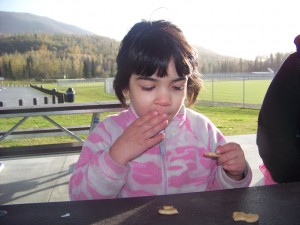
In the year 2002, Anchorage assumed it needed a three lane highway through the heart of Chugiak, destroying many of the earliest landmarks, and taking the neatly manicured lawns and trees of residents belonging to its earliest history. Once again, the rabble rousers sounded the call to arms. Demonstrations were held along the road and at assembly meetings. Petitions were signed at every public place. Surveying marks were uprooted, signs were vandalized. Eventually, a compromise was reached; an uneasy one. The road would be narrowed to include only an occasional turning lane and were modified to leave the elderly yet quaint buildings alone, keeping Chugiak’s homespun face, but still unable to resist a little land grabbing by adding in a luxurious bike path. Folk around here joke that the community is getting a million dollar road and a billion dollar bike path.
Anchorage has actually been a bit generous with Chugiak lately. Although it couldn’t resist whittling away at the playground for the Headstart program, the dog training field, and the Loretta French Horseback Riding Park, it did remove a few of our hills to present an impressive little league baseball park, with ample space for cars and a side park with play equipment for young children.
One can only speculate on the motivations for such generosity. Of course, it might have to do with location, location. Chugiak makes a natural hub for tourism. With all the conveniences of modern civilization right at its fingertips, it still slumbers in a pastoral setting of bygone days. Dog teams howl, staked out in their yards, livestock wander into places they shouldn’t be and moose make themselves comfortable on doorsteps. The people harvest vegetables, berries, fish and wild game each year, sharing them with each other, children play by the lakes all summer, skate and sled all winter.
Numerous lakes dot the landscape between Eagle River and Eklutna, the land is riveted with rivers and streams, trails lead up into mountains filled with wild blueberries. It’s within close circumference of the Eklutna and the Knik Glaciers. Chugiak is an apex point between Anchorage, Wasilla and Palmer. From there, it’s an equal distance to any of the three towns. From there, it is the artist’s dream, the adventurer’s jumping point.
When it comes to potential, things can get a little worrisome. While Chugiak establishments are perfectly agreeable that Chugiak could become a major tourism spot, they’ve had a great deal of difficulty in being considered better businesses. It’s almost beginning to appear the facelift includes removing the rabble rousers.
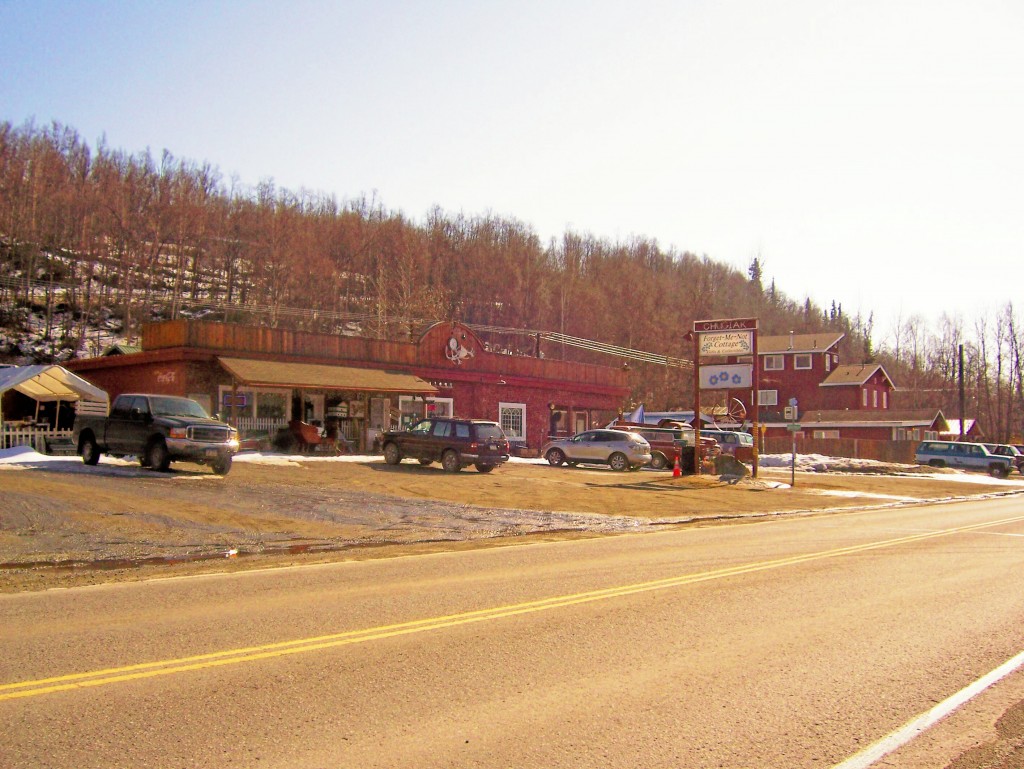
There is no face lift worth the removal of character. The name, “Chugiak” is Athabascan for “place of many places”. It was chosen partly as a correction of the Chugach range, which the early settlers were told was being pronounced incorrectly, and partly because those first five family were enthralled with the idea of a place that could incorporate everybody, regardless of their origins. They crafted their lives around learning to absorb differences, to accept individuality and to encourage innovative thinking. Their cross cultural blend includes Norwegians and Irish, Alaskan Natives, the Athabascan village of Eklutna, a Russian Orthodox Village, Japanese, Koreans and Hispanics.
Moose Horn has changed considerably since those initial days when it served as the general store, post office and town hall. It’s evolved, at times, into a restaurant, a full service station, an auto repair and currently serves as a bus barn. What hasn’t changed is a cabin styled store called “The Fuji Shop”. Owned by early homesteader, Art Wallace, it contains a variety of hand crafts, novelty items and household goods from around the world, including hard to find 1960’s Japanese crafts and porcelain, much of which are still in their boxes. If you are lucky, you might be able to crank out a story from the Wallace family on how Art opened the store by disappearing into the Orient for five years and returning with a merchant ship full of goods. If you are really lucky, they might tell you the amazing tale of how an ancient, rotting merchant’s boat is now sitting in their front yard after being dragged three hundred miles from the Homer Bay up the Cook Inlet.
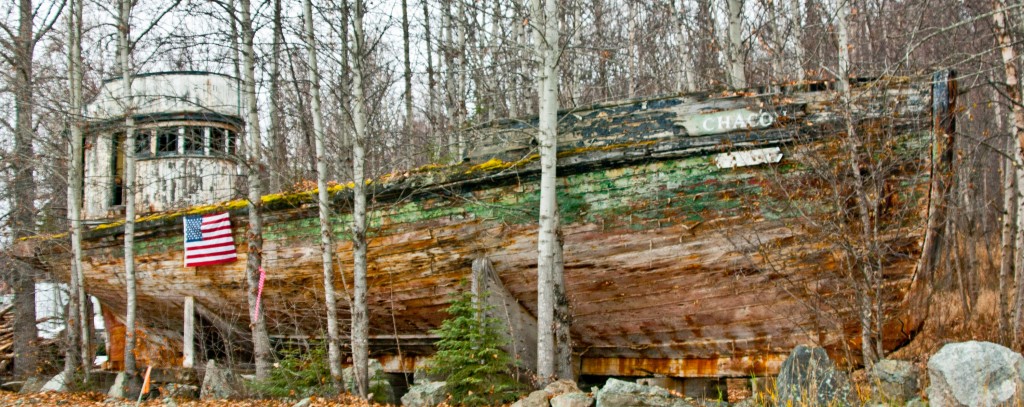
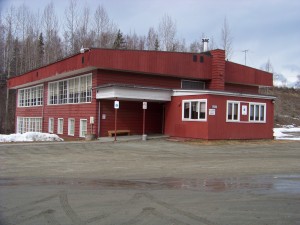
The hub of Chugiak that nourished the initial settlement, hasn’t changed much at all. The initial post office is still there, along with the scattered housing that had once been the landing pad for people moving into the area. Across the road, is the original school, although it’s now used as a community center. Most of the structures have undergone some major repairs, alterations and paint jobs, but they still retain their original foundations. One of the most charming make-overs is an antiques and collectibles shop called “Forget Me Not Cottage”. The structure was originally built as Chugiak’s first Methodist Church. When a new church was built in an alternate location to accommodate its rapidly increasing congregation, the old one was sold, to become first a small general store, than the shop as it’s seen today.
As delightfully quaint as the shop looks on the outside, it’s the owner who is the most delightful. Known in the community simply as “Kelly”, you can find her outside any time of the day, decorating the bus stop so the wait, accommodated by a donated lawn chair, has a pleasant, homey feel, chatting with the neighbors or adding yet another piece of rustic delight to landscape arrangement. On cold winter days, she offers hot tea to the customers who come stomping in with snow still clinging to their boots, and in the summer, she sets out a picnic table with an awning for those who desire a bit of cool refreshment.
The real hub of Chugiak has shifted a little. Half a mile down the road is the first low-retail store to come to Chugiak, “The Rural Discount Center”. Although there is no set expectation on most of the merchandise offers – The RDC sells whatever it can buy at a discount to pass the savings on to the customer – it has one product that most of the community depends on; cheap dog food. The RDC is the place the local mushers send their business to for feeding their sled dogs. There, you can learn all the stories that circulate around the local Iditarod champions, Martin Buser, Dee Dee Jonroe and Jeff King.
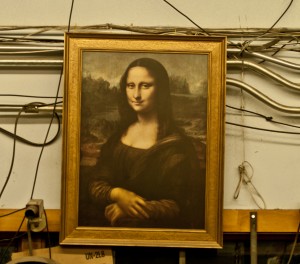
Whatever can’t be found at the RDC is searched for at Alice Mae’s Shoppers Cache. Originally designed as a convenience store with an attached laundry mat, it quickly began shaping itself according to the demands of the locals who wanted their particular conveniences. The grocery department became larger. Video rentals and showers were added. A gas station was built. The hub, which had been slowly gravitating north, settled around the convenience store.
You might not ever meet another business man like Vern Foster. Born to early Alaskan prospectors, he gained his first small fortune with a gold mine just outside of Fairbanks. Taking his profits, he opened his first business in Fairbanks, a bar named “Savoy”. It was here that he met his wife, Alice Mae. The young Inuit woman helped him maintain his bar for ten years, but told him her real desire was to own a small grocery store. It was then that Vern began looking around for a good investment and decided on the little corner of Chugiak that connects both Birchwood and the Parks Highway.
Although a shrewd businessman, always with one eye of the profit possibilities, his other is always on the needs of the community. His services have included free coffee, check cashing for established community members, free matches and paper funnels for oil changes, and even modest charge accounts. When the price of gasoline began shooting off the charts, he became so angry, he began looking around for independent companies to buy his gasoline from. Once he found a suitable company, he began charging only a few cents more than it had cost him to fill the station, giving him the legacy of having the cheapest gas in the state.
Inside Shopper’s Cache, you will see employees who are told they are not working, only playing, and who have a list of clients who wait anxiously for a few words of verbal abuse. Antics include counter dancing, mock fist fights and a variety of sit-com displays by the customers. It has the most extensive candy shelf, that customers can leave their children for a half an hour with the admonishment they can only pick out one candy, while they scurry over to the liquor side to catch up on the latest gossip.
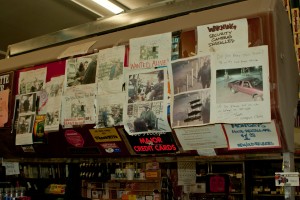
When issues began to rise over petty theft and incidences involving conflict, Vern filled the store with video cameras. Instead of being outraged, the honest members were delighted. The television view screen was taped with a sign that said, “Vern’s show” with the customers testing to see if he was watching by making faces or by giving the camera the finger. Often times he was, and would call on the phone to kick the customer out of the store. This type of mock removal was a badge of honor, sure to bring the customer back with a new gimmick for entertainment.
The dishonest customers found themselves at a distinct disadvantage. Their petty shoplifting crimes were photographed and placed above the counter, never to be removed until the customer came in to apologize. Attempts to sue the place for negligence or staged accidents fell flat on their faces when the video footage proved who the real instigators were.
Among the blend of typical Alaskan art, a long piece of baleen, some harpoons, a couple of shots of Fairbanks gold, a photograph of President Eisenhower among Inuit troops, is proof that the Fosters have been to France and have good taste; a hanging copy of the Mona Lisa.
This is the community of Chugiak, a place where people from many different places, come together in a free-spirited display of Alaska’s distinct cross-cultural features. More than just pleasant to the eye, it’s pleasant to the feeling of belonging to a lively, humorous, independent people. If Anchorage gives it the full face lift it desires, complete with an agenda for fattening assembly pockets, it will create a busy district for its own corporate entities, but will lose the flavor of a rural community. It will no longer be Chugiak, just an extension of Anchorage.
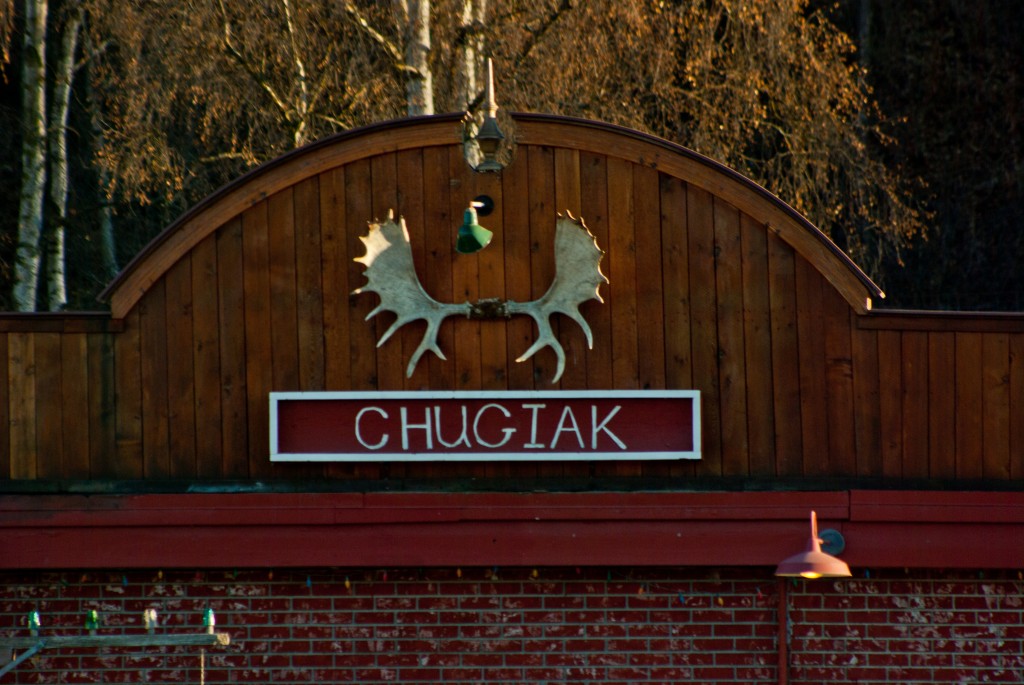

Excellent coverage! Great photos, sounds like a fun and subversive trip!
Wow, you’ve done your research – thanks for the memories of “Old Chugiak”; a good read. Thanks!
Mitch, i woke up this morning mumbling to myself because i hadn’t included any photos of our recreational outlets; our campgrounds, our lakes, our rivers, glacier and waterfall climbing, the Eklutna pow-wows and its own scenic, historical buildings, but; self argued back; the article was already long and packed with centralized Chugiak photos. I’ll probably have to do a follow-up sometime that concentrates primarily on the astonishing natural playground Chugiak has to offer.
Ken, i’m so glad you dropped in to visit. Nothing warms my heart more than the comments of someone who had grown up in Old Chugiak and knew the personality that defined its character. What disturbs me about the Anchorage expansion is that it has been a move to push out the initial population that continues to live by modest means so the millionaires who would like to invest in their pocket fattening schemes can produce their own version of upper middle class, urban paradise. In the first round, the banks foreclosed on such long-standing, struggling, privately owned businesses as Till Wallace’s horse ranch and cabins in the Chugach foothills, Jone’s Tool Rental (which has a subversive story all its own) and the Eklutna gravel pits. In the second round, the municipality has swept in, poking around homes and small businesses for code violations, sub-standard housing and Anchorage statutes that do not allow the cultivation of livestock and sled dogs within the city limits. As you know, Anchorage is twenty miles away and Chugiak is distinctly rural. Dog teams and livestock occupy a good half of Chugiak residences. Nor do they have any constructive policies for helping those who can’t afford city codes, only a penalty base for not following them.
Art Wallace responded to the road commissions efforts to have him remove his boat and Fuji shop in their eminent domain land grab by placing huge boulders in front of it. The map was modified to leave his possessions alone, but the city continues to hound him over his boat. The initial map would also have placed the highway directly outside the front doors of the RDC, which is located about fifty yards behind the Spring Creek Lodge. Only when Dixie Waddell registered the lodge with the historical society was the road commission forced to back off and use some of the undeveloped land on the other side of the road.
Tourism to Chugiak has increased quite a bit over the last few years, especially among newly arrived Anchorage residents anxious to explore wilderness options close to home and the “explore the real Alaska” spirited Europeans. I am anxious that this new interest directly benefits the existing small businesses before Anchorage finds a way to force them out. Because of an underlying loyalty and deep commitment to each other, i suspect they will.
Great read Karlsie, the pictures went a long way to illustrate your article. The dynamics you describe remind me a lot of the Quebecan hinterland, with bickerings amongst villagers and developers often being won by the local nouveaux-riches, unless everyone sticks together.
Pity what money can do to people, and how it inevitably fashions the landscapes in a somewhat tortured, garbled version of nature.
Raven, i’ve noticed from my correspondence with Neonorth how closely parallel so much of Alaska’s history and political slant has followed Canada’s. Chugiak has so far resisted the nouveaux-riches, but they have been persistent in their punishments for stating our unity. Our little stronghold is backed by the ever-watchful communities of Butte, Palmer and Sutton, which also have much to lose by a corporate march into their industry. All three communities are small, essentially poor, but with a great deal of natural resource potential. It’s time the newly rich understood, when they invade these peaceful rural communities, they are riding on the backs of people who put years of their lives and hard work into creating a home. The community would not have been such a pleasant place to go without them.
As I read this I am both enchanted and scared.
It is the wild charm that I would want to see should I have the opportunity to visit Alaska one day. People living in the land, not people subjugating the land.
At the same time I recognize that it is visitors like me that call for this change. Chugiak presents too much of a draw for an area that has gone suburban. Chugiak is the pretty little side-trip for tourists.
Eventually this will change everything and it will look like everywhere America because god forbid the tourist who come to see the “real” Alaska be without their fancy coffee drinks and chain restraunt names they recognize.
Chugiak seems to me to be in a tenuous spot just now.
Grainne, there are plenty of pretty little towns in Alaska for the latte guzzling, name dropping crowd. The difference between these cozy little touristy spots and Chugiak is, Chugiak has a heart. It has personal character. The tourists that come here would just go somewhere else as their holiday central because they are essentially travelers, not tourists. They don’t come to view, but to experience. They want the taste of local color, the buoyant humor, the service with a genuine smile aspect that defines Chugiak. It would become nothing more than the suburbs you can find anywhere else in the US, once Anchorage was done reshaping Chugiak. It would be boring and tourists would lose interest quickly because it’s the local people who are the real tourist attraction. Remove the small businesses for the profit making machine and you have a community that’s good for nothing more than residential development.
I realize there are towns everywhere under the same guns of commercial development, but urban sprawl has to stop somewhere before it bleeds out all the characteristics of diversity. If each of these little towns put up as much resistance as Chugiak has, eventually the message might come through that the approval ratings of illustrious face lift plans is very, very low. You would think they would get the message simply by looking at the demographics of where the most violent acts are committed. Although the rural areas have had some violent crime, those crimes are so rare and far between, it sends a shock wave throughout the entire state when one occurs. The majority of the crimes are committed in upscale neighborhoods, around shopping malls or in congested areas.
Karla:
Great article. You are a good writer. I was your pastor from 1965-1969 at the United Methodist Church of Chugiak. If e-mail information is correct, you have now lost both of your parents. My condolences. Were they both able to stay in your family home until they died?
We now live in the State of Washington.
John J. Shaffer
Stanwood, Washington
Reverend Shaffer, I was both surprised and pleased to see you at our web site. Yes, both parents were able to stay in the home until they died, as was their wishes, although the family home has since ended as the older siblings decided to put it on the market. It’s fittingly symbolic of the “New Alaskan”. The strong sense of family and service to the community will be erased as a self indulgent, upper middle class, concerned only with material worth, move in. Roads, parks, public buildings were named after the first pioneers who died, but there are not so many people in the community anymore who remember the early founders and the services they performed.
[…] the voice of Kate Earl. Chugiak Alaska, is known as “Place of Many Places.” Check out this article on Chugiak AK, it will give you a little more […]
Just curious, but how can something dated May 25th have happened yet?
I really enjoyed your article. I grew up in Chugiak (1950-1978) and you brought back a lot of fun memories.
although the writer of this article is a complete halfwit and her story is, well beyond words its nice to read a lil about home even if written from a skewed burnout’s perspective
@bobcat hater:
Shit, man you’ve got some nerve coming here insulting people you don’t even know. You’re seriously messed up and you should definitely have yourself checked by a professional lest you go on a killing spree in some elementary school.
We don’t insult people here shithead. Don’t like what you read? Go fuck yourself.
This brought back memories from long ago.
When I was a kid, Chugiak Elementary (the reddish brown building in the photo) was a light blue and held the principal’s office. It was connected by a long sidewalk to the Primary School where kids in grades K-3 went to class.
Downstairs in the primary school, was the multi-purpose room, with a stage, and pull-down tables for lunch. Everyone got a chance to help the cooks serve the meal, and if you were lucky they had baked Ranger cookies, and the servers got to eat an extra cookie. After the meal some kids got to help set the tables back into the walls, clear tables, and dump the trash.
It was always fun to help Mr. Berg (?) the janitor with his tasks, as he told stories, unbelievable tales about when he was a kid when he was hungry and ate oranges, skin and all.
The school multi-purpose room was often the location of school Dime-A-Dish fundraisers. (Kids wanted to be sure to get some of Mrs. Hildeman’s rhubarb pie, and Mrs. Cline’s green Jell-O, and everyone knew who made the best fried chicken, and who served up fried rabbit when the chickens didn’t survive the winter.)
In the winter near Fur Rondy, there was a community sports festival on the grounds of Chugiak Elementary, and school was dismissed for both Fur Rondy and school sports fest. Sledding down the hill behind the school on inner tubes, ski races, skating (Sherry Jordan and Sylvia Lane were the best skaters), and there were prizes! Mr Roger Larson, a professional skater and 3rd grade teacher was one of the judges.
During the school year, if anyone was sent to the principal’s office for disciplinary reasons, they had to cross from the primary to the elementary school in front of a high hill just behind the schools where it was rumored wolves waited hungrily for naughty children to dawdle on their way.
Mr. Kerr, a 6th grade teacher, had a second-story classroom, and he always had red geraniums blooming in his windows, even in winter. Equipment in the schools was stamped with little brass plates marked “Property of Alaska Territorial Schools”, the balances and weighing scale, phonograph, movie projector, etc.
On the playground, there were tetherballs and the sound of jangling chains during a windy day, four-square was marked out in chalk on the paved basketball court and playground. The round red bouncy balls often ended up on the flat school roofs, and then there was the challenge of collecting them to continue playing. During recess, Red Rover, Red Rover, Send Billy Over, was a hit.
Mr Lane’s 4th grade classroom was located across from the boiler room and down the hall from the library. He was the ski instructor and his classroom (as every class in the building) had a distinctive aroma of melting pine tar.
Does anyone remember the ridged flooring allowing rivulets of water to flow away from the walking surface? In the multi-purpose room the floor tiles had an odor of the floor polish used.
On Wednesdays, the school sponsored Savings Bonds purchases. Kids got a free square of vanilla ice cream from Matanuska Maid Dairy for bringing their dimes for saving, or maybe the dimes were for the ice cream? A special treat was orange sherbet on those days.
Kids always looked forward to school, and someday having Mr Leo Powell as their 6th grade teacher. He was the funnest and fairest. Mr. Heath (Sarah Palin’s father) even taught 6th grade at Chugiak Elementary.
After school, older kids sat in the back of the schoolbus and chose the songs for group singing on the yellow Bluebirds of Mrs. Kamholtz’, Mr. Ramsey’s and the other school bus drivers including 100 Bottles of Beer on the Wall. It was usually about 75 bottles before passing the Fetrow’s cabin high above Richardson, and down to less than 10 bottles before turning off the highway onto Birchwood Loop Road.
You have a lot of very clear memories that bring back so many images. Thank you so much for sharing.
Karla: With your own history and connection to old Chugiak, I can’t think of anyone more qualified to write this article, well done friend.!!
i just love this. Saw names of people that I remember. Bill and I with our 3 children lived on Sunset Blvd of. North birch wood. A wonderful place to raise our children
[…] Chugiak: The Town that Defied Anchorage – The Knik Arm Courier was bought out by Lee Jordan, who published the “Eagle River Star”, a newspaper that still exists although Jordan has retired. Chugiak grumbled that Eagle River was getting uppity, forgetting its humble ties to the home base … […]
I see a picture of the Old Chugiak Middle School but I do not see one of the Elementary school that was just the other side of the play ground.
Fact is, I do not remember ever seeing a picture of it. What happened with that?
Loved your article Karla.
Great writing. 🙂
Just finished reading over these attached comments.
Many bring back memories in the late 1960s driving to various spots around the outside of Anchorage and walking to the homes in the area dropping off leaflets and explaining to residents and store owners the consequences of an Anchorage takeover.
We won that first battle I believe.
But now I read how it all turned out. Much like we all thought it would.
It is very hard if not totally impossible for the scattered outskirts to compete with a central voting block of the big city.
I mean, take a vote for instance on weather or not to outlaw outhouses. :-/ Not hard to figure out how that one would go, huh? :-/ It is so sad.
The less influential always seem to get it in the . . . . .
I miss Chugiak, Peters Creek and Eagle River, but people tell me that I would not recognize Eagle River at all.
That is a real shame.
PS
I read the comment of “bobcat hater” and I really did not take it that he was serious about his estimation of you.
It was a sort of “tongue in cheek” thing, ya know? Karla, you are very smart as well as talented. 🙂
I really enjoyed your article. I lived in Chugiak for about 3 years in the late 70s. We bought and restored the house behind the then post office and next to a musher. We were instantly welcome and included in the community by people like Paul and Margaret Swanson And Jinny Kirk. I worked at the Head Start program across the street. I felt I had stepped back in time to a town similar to where I had grown up in California (where everyone knew everyone and there was a real sense of community and caring for each other. ). I visited Alaska again in 2014 and it looked so similar I was thrilled! I hope it is able to retain that small community feel.
Is Chugiak, AK its own town? Some things list it as town some list it as unincorporated . I heard in the 1970’s (year?) when Anchorage borough and town of Anchorage merged Chugiak became part of Anchorage. There has been on an off legal dispute ever since. Does it have its own post office and zip code? Can you live on $20.00 an hour in Chugiak?
Enjoyed reading this article and even learned some things too. My family and I lived in Chugiak for 7 years and loved the place. Our home was off Old Olberg Road, actually on Centurian Drive. Chugiak for us was everything the article stated and more. 2 of 3 of our children graduated from Chugiak High School. We all have many fond memories of our time spent there. I just wanted to say that I certainly hope that Anchorage is not able annex Chugiak and make it a tourist trap or worse. The place gives residents an opportunity to experience living in Alaska.